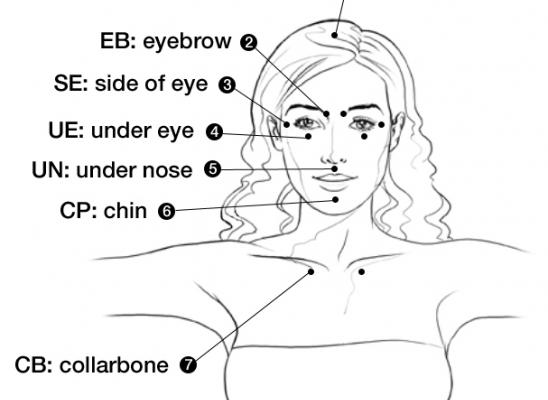Skin-Picking and Seeking Treatment: Perception Is Everything

Online test
Find out the severity of your symptoms with this free online test
For people struggling with skin picking, finding adequate treatment can be a challenge. While classified as an obsessive-compulsive disorder by the APA’s Diagnostic and Statistical Manual (DSM-5), the disorder also results in physical injury to the skin sometimes requiring medical attention. Deciding what type of clinician to see can be confusing. Is it medical? Is it psychiatric? Skin picking also carries a degree of embarrassment for many people. Asking for help can be hard, leaving many to choose to delay treatment. A new study published in The Journal of Obsessive-Compulsive and Related Disorders sheds new light on the attitudes and experiences of people seeking treatment for skin picking and offers recommendations for improving the treatment experience.
Understanding the Challenges
Excoriation Disorder, also known as skin picking or dermatillomania, is a relatively common disorder that is characterized by repetitive skin picking, scratching or rubbing that results in visible skin injury. In severe cases, the injury can be significant enough to require medical intervention for open wounds or infection resulting from the picking.
But, the effects of skin picking go beyond skin injury. People struggling with this disorder also tend to experience significant emotional distress, including anxiety and depression, embarrassment and social avoidance. Mood disturbance can be quite serious. About 15% of people who have this disorder have been psychiatrically hospitalized with about 11% reporting a suicide attempt. Thus, it can have both medical and psychiatric elements.
Skin picking affects about 2-5% of the general population yet a search of the research literature reveals it to be under-represented. As a result, there is a lack of empirically-supported treatment interventions. Part of that dilemma is the result of how skin-picking was viewed in the clinical perspective.
Prior to 2013, Excoriation Disorder was not identified as a distinct psychiatric disorder. Instead, it was generally viewed as a symptom of obsessive-compulsive disorder or body-dysmorphic disorder, or simply a habit such as hair twirling or nose-picking. However, sufficient evidence showed that skin picking could occur without other obsessions, compulsions or concerns about body image. As a result, Excoriation was added to the DSM-5 as a distinct disorder. Clinicians now had clear clinical criteria. Effective treatments have not kept pace.
Like other body-focused repetitive disorders such as Trichotillomania, there is no definitive treatment for skin-picking. Current treatments consist primarily of psychotherapy and medication management when accompanied by symptoms requiring pharmacological support. Effectiveness is highly variable.
When seeking therapy, the most common and most empirically-supported therapeutic approach to treating skin-picking is some variation of behavioral therapy, primarily Habit Reversal. Habit Reversal has shown some efficacy in symptom reduction. It is particularly appealing because it is flexible and can be used in-person, online, or as self-help. Other approaches that may be used alone or in combination with Habit Reversal include Cognitive Behavioral Therapy (CBT) or Acceptance and Commitment Therapy(ACT).
Medications are sometimes used to treat aspects of skin-picking, specially when there are co-occurring disorders, such as a major depression, present and requiring management. Select Serotonin Reuptake Inhibitors (SSRIs), lamotrigine, and N-Acetylcysteine have been used. However, there is no “first-line” medication or “gold standard” psychotherapeutic approach for treating skin-picking. As the researchers noted, “research on skin picking disorder is still lacking adequately powered randomized controlled trials in samples diagnosed according to the official DSM-5 criteria.”
The other issue driving treatment is low participation in treatment. People with excoriation disorder tend to be hesitant to seek treatment or struggle to find adequate treatment options. As a result, research and anecdotal evidence suggest that it often goes untreated or under-treated.
While we know more about diagnostics now, having a diagnosis is only part of the story. It doesn’t explain why some people choose treatment and some don’t or what their experiences are. The researchers found little to no data regarding attitudes and expectations towards help-seeking, especially since the addition of Excoriation Disorder to the DSM-5, and how these attitudes and experiences might affect the willingness to seek treatment for skin picking. Given the medical and psychiatric impacts of skin-picking, there is a need to understand these dynamics to improve openness to treatment. The study in the Journal of Obsessive-Compulsive and Related Disorders sought to examine the expectations and attitudes that contribute to the treatment and the treatment experience. The results might surprise you.
Attitudes and Perceptions of The Treatment Experience
The study involved individuals who sought out an internet-based, self-help program for their skin picking. Using a series of questionnaires, the researchers gathered data regarding help-seeking behaviors, help-seeking attitudes, and skin-picking severity.
Help-seeking behaviors included whether they had sought help for their picking and if so, what types of help were sought. They were asked about their experience and whether they found it helpful. Reasons for not seeking help were also identified. These questions also included information about current mental health care and diagnoses.
Help-seeking attitudes assessed the person’s expectations for seeking help as well as expectations about the helpfulness of potential providers of care.
Skin-picking severity assessed eight dimensions of skin-picking including:
- frequency
- intensity or urges
- time spent on skin picking
- controllability
- emotional distress
- interference
- avoidance
- damage to the skin
For those people who did not seek treatment, about 60% reported feeling that their skin-picking wasn’t severe enough. About 40% reported feeling insecure or embarrassed about their condition. And, about 40% indicated that they felt doctors and therapists were not very knowledgeable about skin picking.
About half of all participants knew who to reach out to for help and about 44% actually had sought professional help. Those providers included dermatologists, psychotherapists, psychologists, psychiatrists, family doctors, and clinics. As a whole, they generally reported feeling hopeful and having positive expectations towards professional help.
For those who sought help, perceptions of helpfulness were missed. While most considered their chosen providers as helpful, more specifically, they actually rated them as “a little helpful”. The providers perceived as most helpful included psychotherapists and psychiatrists. Interestingly, Internet and support groups were also perceived as helpful. “Very helpful” was not used in most cases.
Not all types of providers were seen as helpful. Family doctors and dermatologists in particular were perceived as not helpful. Nor were family and friends.
So, what does this mean for people seeking help for skin picking? And, what do these findings mean for the clinicians who may be sought out to care for them?
Towards A More Impactful Experience
What is most telling about this study is that people struggling with skin picking are generally not opposed to seeking help. In fact, most seem to have a positive attitude about seeking help and positive expectations that professional help can be beneficial. It is what happens during the treatment process that seems to be the reason people remain untreated or under-treated.
Providers from different disciplines are perceived differently in terms of their helpfulness. Family doctors, who might actually be among the first clinicians to see someone with skin-picking issues, are generally perceived as not helpful. Dermatologists, also clinicians who may be the first contact for someone with a skin issue, were not perceived as helpful either. It is the mental health clinicians who were viewed as helpful. However, seeking mental health care still carries a stigma and, skin issues are not immediately equated with mental health. For those reasons alone, mental health clinicians may not be the first clinician someone might choose to see, even though the. So, it’s a dilemma for both the health professionals who want to provide care and the person needing care.
The study recommendations include improved clinical awareness and coordination of care when appropriate. Not every healthcare provider is sufficiently knowledgeable about skin-picking, its psychological underpinnings, the risk for medical complications, and treatment options. It is not a criticism of any clinician but more a lack of awareness and points to the need for improved interdisciplinary education about the disorder as well as coordination of care between medical and psychiatric clinicians. Each type of provider can play a proactive role in helping someone understand their disorder and accessing care. By coordinating care, people with skin-picking disorders can receive the treatment most appropriate for their needs.
The study noted a similar need for education and awareness of resources for people who struggle with skin-picking. A lack of confidence in doctors and therapists to have the expertise to treat their skin-picking and a lack of guidance in seeking care seems to deter some from seeking help. Understanding the different aspects of the care continuum and transparency about treatment options and when to seek help can alleviate fears and improve the treatment experience.
As researchers continue to better define and understand skin-picking, treatment protocols will follow. For now, while there is no definitive treatment for skin-picking and other body-focused repetitive behaviors, there is hope and help. Current treatments can offer some relief from symptoms. For clinicians called upon to care for people dealing with skin-picking, education, support and coordination of care seem to be the tools that can help to improve the person’s care experience.
If you are dealing with skin-picking and are seeking help, the first step is to seek out a clinician who is experienced in working with body-focused repetitive behaviors like skin-picking. Depending on what your needs are, that may be a medical clinician or a mental health professional, or both. It’s ok to ask about their knowledge in this area. Support from family and friends is also important. Reach out to the people who care about you and ask for their support. Remember that your disorder does not define you and, with treatment and support, you can take control of your skin-picking.
References
- Gallinat, C., Moessner, M., Haenssle, H., Winkler, J., Backenstrass, M., & Bauer, S. (2019). Help-seeking attitudes and experiences in individuals affected by skin picking. Journal of Obsessive-Compulsive and Related Disorders, 23, 100483.
- Orlaug, B.L., Grant, J.E. (2010). Pathologic skin picking. Am J Drug Alcohol Abuse, 36(5), 296-303. https://www.tandfonline.com/doi/abs/10.3109/00952991003747543
- Skin picking disorder. (2012, November 1). Retrieved from https://ajp.psychiatryonline.org/doi/full/10.1176/appi.ajp.2012.12040508
- Lochner, C., Roos, A., & Stein, D. J. (2017). Excoriation (skin-picking) disorder: a systematic review of treatment options. Neuropsychiatric disease and treatment, 13, 1867–1872. https://doi.org/10.2147/NDT.S121138
Online test
Find out the severity of your symptoms with this free online test
Start your journey with SkinPick
Take control of your life and find freedom from skin picking through professional therapy and evidence-based behavioral techniques.
Start Now



